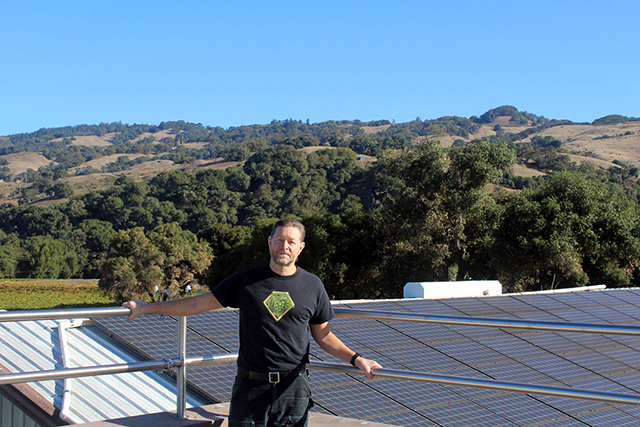
Although one of the older craft breweries in the country, Anderson Valley’s switch to being more innovative with the return of Fal Allen from Asia in 2010 has helped see the company grow thanks to barrel-aged beers and its Gose lineup.
Allen, who previously had worked at the Boonville, California brewery from 2000 to 2005, returned after former owner Ken Allen sold it to current AVBC owner Trey White. Fal credits White with the push for growth from a small brewpub to distributing beers across the US.
“One of the great things about working with Trey is that he is very much in favor of innovation and he recognized — and I think intentionally — bought Anderson Valley Brewing Company because it had a great reputation, but the reputation was a little bit languishing as the old owner tried to find a buyer, [and] he didn’t want to put a lot of money into it,” Allen said. “Consequently I don’t think he got the price he might have if he’d continued to develop the brands in the business. But when Trey took over he recognized that the craft beer scene was going to change and that innovation was a big new thing and that those breweries that didn’t innovate and redefined themselves were going to have trouble.“
White has been proven right as some breweries that didn’t innovate have moved aside.
“Trey was able to steward and direct and drive Anderson Valley from a small regional to a much broader audience,” Allen said. “I think he doubled the production here at the brewery in the first five years. And it’s continued to grow. He’s done a really good job — I think — with encouraging us to get out and innovate and find new styles and brew new beers and do new things. It has been great.”
That included a line of Goses, a partnership with Wild Turkey to procure Bourbon barrels on a needed basis along with what Allen thinks is an under-appreciated line of barrel-aged Sour beers.
Spurred by using what he learned from living in Asia and working toward infusing Asian dishes into beer, Allen already had some thoughts on innovation as White encouraged him and the AVBC brewing staff to explore new ideas to help spark the brewery’s reach.
“We tried using different flavors and ingredients at first and those had some good success,” Allen said. “Really the big one was Gose for us. … and it kind of changed everything about Anderson Valley. It really got people to look at us in a different way and it got us back in the minds and the view of a lot of consumers.
“Some of our subsequent beers have gotten the attention that they probably wouldn’t have if it wasn’t for Gose.”
But Gose was a beer style Allen had never even heard of before the brewery started brewing it.
“The learning curve was steep and most of learning was done, as with I think a lot of breweries, it is done in-house,” he explained. “Our initial experiments were not to make Gose, [but] to make a brewhouse soured beer and just kind of mess around with that idea and it came out of the kind of their concept of a sour mash for whiskey.”
While they were working on that process a local homebrew said that the process Allen described would be a great way to make a Gose.
“Both the lab guy, Andy Hooper (now as Seismic Brewing), and I said, ‘A what?,’ “ recalled Allen.
So the duo did some research and bought a couple commercial examples that they could find from Leipzig.
“We thought, yeah we can do this. That does sound like a good idea,” Allen said. “We took that process and now we had a style of beer to aim for. And we tried to make a Gose as close to the Leipzig style as we could from tasting them and I think we came up with a pretty good way of doing it.
“But as I outlined in the Gose book there are many, many ways to brew a Sour beer. People have been very inventive and some of them make really great beer and are great processes and I think others are not as good. You just have to find which one of them works best for your brewery.”
The innovation hasn’t stopped either. Allen said many experiments have yet to leave the brewery’s taproom, like their new Brut IPA and a few other creations he didn’t want to disclose before presstime.
“Because it hasn’t traveled and it’s so fresh it’s going to taste best at the taproom,” he said of the Brut IPA. “If you’re a beer fanatic and traveling through an area, that’s one good reason to stop and have a beer at any taproom is to try it fresh versus trying it in the bottle or the can.
“I think you have to continually try and think outside of beer for flavors and look for things in your markets and in your meals that you have out and look for things and think ‘oh yeah, that flavor would be interesting in beer. Now how do I get that flavor in?’ “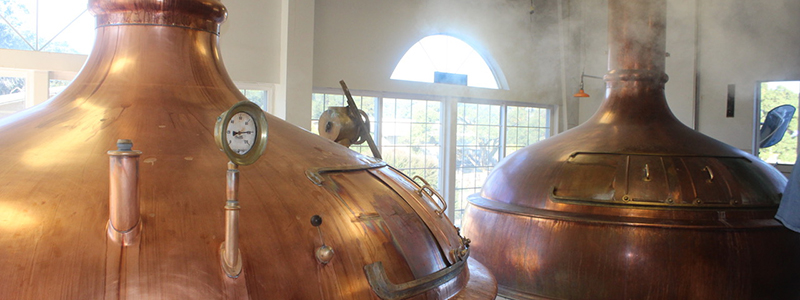
Allen said everyone has probably seen some pretty crazy beers out there. He noted a squid ink Pale Ale along with coming across all kinds of crazy fruit.
“I’ve been fortunate enough to give presentations and lectures in other countries,” he said. “So throughout Southeast Asia and throughout South America where they have all kinds of interesting fruits that we don’t know about or get up here in the U.S.
“When I travel I always go to the local markets and take a look at what they have and see if I can get it maybe dried or even fresh back in the U.S. or make a connection that can send us some. I’m always poking around at the markets looking for new ideas. But, you want to you want to make a beer that has a high drinkability, something that’s qualifiable and not just weird for the sake of being, you know, weird.”
Other than Goses, Allen prides his work on the barrel-aged Sours that he has worked on. The brewery’s barrel program has gone from 10 barrels to more than 2,000 in production now.
“We’ve gotten less attention for that,” Allen noted. “I think our Bourbon Barrel Stout has gotten a lot of attention but some of our Sour barrel beers just seemed to go unnoticed which is odd to me. Of course I’m biased, but just having other people try them I think we make some really good barrel-aged Sours and people just don’t talk about them or buy them much.”
Achieving a level of success with barrel-aged Sours takes patience and tasting Allen said.
He had just finished up doing a barrel-tasting session with Joey and Billie Anderson of Brews Brothers, a craft beer bar out of Los Angeles, and Allen said they were blown away by how different the same beer can age in different barrels.
“I see that more often than they do, but I think tasting with someone who is not familiar with that really brings it home that really every single barrel is different,” Allen said. “And then your challenge comes deciding which barrels will go into the blend and which ones won’t. That was something that we didn’t think of when we started the barrel program, I think that’s where the real art of making barrel-aged beer that goes to market is discovering and coaching the barrels along in the best way you can and then deciding which ones are going to make it into the final cut.“
It’s been a learning curve on tasting Sours. There are initially flavors that you’re unfamiliar with or don’t think you’re going to want in the beer.
“It’s important to recognize them and identify them,” Allen said. “Quite often I found that there are things that I wouldn’t want upfront in a soured beer. But in smaller amounts [they] give a nuance to the beer that is important.”
Brettanomyces and the flavors that it makes is a good example of that, he said. Some of the flavors that some of the strains of Brettanomyces makes can be very strong and have quite an impact.
“In small amounts I think those enhance and really kind of flesh out the other flavors,” Allen said. “But if overdone they can be overwhelming and too much barnyard, too sweaty, too horsey.”
That’s true of a lot of things, like acetic acid as opposed to lactic acid. Allen thinks a little bit of acetic acid really opens up a beer and gives it more fullness.
“If you let it go too far it just tastes like vinegar,” he said. “I think that’s one mistake that some newer brewers make. They think IPAs have always been all about the hop punch and so they think that Sour beer should be made the same way.
“So you get these giant acid bombs that are undrinkably vinegar and they think well that’s it, that’s what people want. I think sometimes some of the consumers do think they want it. But like an overhyped IPA, it’s interesting for a sip or two or maybe even a half pint but no one’s going to be drinking three pints of that kind of giant Sour beer. It’ll just kill your stomach.“
Luck has also played a role in the success of the barrel program, specifically being able to source new barrels when needed. White went to college with someone who worked at Wild Turkey and they were able to broker a deal to use the company’s Bourbon Barrel’s exclusively for it’s Bourbon barrel-aged Oatmeal Stout.
“There are not a lot of Oatmeal Stouts out there, it’s a lower alcohol beer and that’s kind of what we wanted to achieve — a lower alcohol Bourbon barrel-aged beer,” Allen said. “So we have a very steady, very good supply of Wild Turkey Bourbon barrels and we don’t use anybody else’s Bourbon barrels. And that’s been really good for us to have that full-time, steady supply.”
The brewery — located roughly a two-hour drive north of the Bay Area — is in the middle of wine country and there are 40-plus wineries just in Anderson Valley.
“That’s not counting the hundreds that are around us,” Allen said. “Any time anybody has a barrel infected with Brett — which is usually what they get and that frightens them — they should call us and we’ll come get them for free. So we picked up a lot of wine barrels and the majority of our Sour beers are done in wine barrels. Not all of them but quite a few of them. That’s been a real bonus for us.
“We were able to get really inexpensive — and still really good condition — barrels and some of them come with built in Brett infections which have been awesome. And we’re able to experiment. A lot of them come with the wine yeast and things going on in there that we wouldn’t have access to. So they’ve kind of enhanced some of the flavor of our sour beers.“
Having some years of experience now and being appreciative of the information he has been able to gather from others in the industry that came before him, Allen was keen on sharing on tips for best practices with barrel management.
“Temperature control I think is a big deal,” he said. “If you just have a barn and you let it rip and you’re in an area like we are, you’re going to have some issues because our coldest days are sub freezing and our warmest days are over 100 degrees Fahrenheit.
“Temperature fluctuation is not good for barrels. That doesn’t enhance things, they like a more steady temperature. We have a barn that we use and we have some temperature control on it and in later stages will even put them into a cooler and keep them at cellar temperatures. That keeps some of the bacteria you don’t want from growing in there. So that’s been very helpful.”
Topping the barrels and keeping headspace to a minimum has been real helpful for Anderson Valley as well.
“The thing that makes acetic acid is Acetobacter and it needs oxygen in order to live and create acetic acid,” Allen explained. “So if you keep that headspace to a minimum you’re going to keep the oxygen out, you’re going to keep the Acetobacter down, and your beers will have a nice clean lactic acid flavor as opposed to too much acetic acid. So that’s been a big deal for us, we top our barrels a lot. We get in there and check all the barrels — each barrel gets checked about every three months. We’re continually doing some topping somewhere.”
As the brewery has grown in the past decade, making sure its product is consistent across the nation is vital. Of course fresh from the source is best, but Allen said he has stumbled upon a three-year-old can of a Gose once and it held up fairly well.
“If a brewer is being really honest they have to say that there are certain types of beers that no matter how much we try or want them to be they’re better at the source than they are 3,000 miles from the source,” he said. “Unexpectedly Goses travel fantastically. They age and travel really well and I think the two reasons for that is, One: they’re soured, so you’re not going to get bacterial growth. And No. 2: they are very low hopped beer and there’s no hop component to oxidize. I’ve drank cans of our Gose that are three years old that taste pretty much like they did when we canned them. Not exactly, of course, but I was shocked at how drinkable they were three years in. Of course we don’t want to see any of our beers except for some of the giant barrel-aged Sour beers to be three or four years old. We’d like to see all of our normal ales consumed in six months … . But by and large I think most brewers want their beer consumed in three to six months which is kind of hard.“
Finally, Allen stressed the need for a lab. He himself came from a background of lab work and wrote technical articles in the 90s for Brewing Techniques Magazine about starting up a small lab.
“I’ve always been a big advocate of a brewery — no matter how small they are — having some sort of lab facility,” Allen said. “When I came here the previous owner had thought that we needed a lab which is always a good thought and he’d made a space for it and then the challenge is finding the right people and getting the right equipment. And that’s taken quite a long time, several decades. But I think it’s very important that you get a brewing lab manager. A person who knows both brewing and lab techniques and then you get a good stock of equipment to do the right kind of test that you need to do.
“The equipment is expensive and hiring two or three people to work in your lab is expensive and it’s often something that a lot of brewery owners would put off. But in today’s market you can’t afford to have anything but the best possible beer you can make out there. So having a lab is imperative and those folks that look the other way and don’t have a lab … it’s a matter of time before they have a problem that gets out into the market. It damages your brand and sometimes you never make a comeback.”

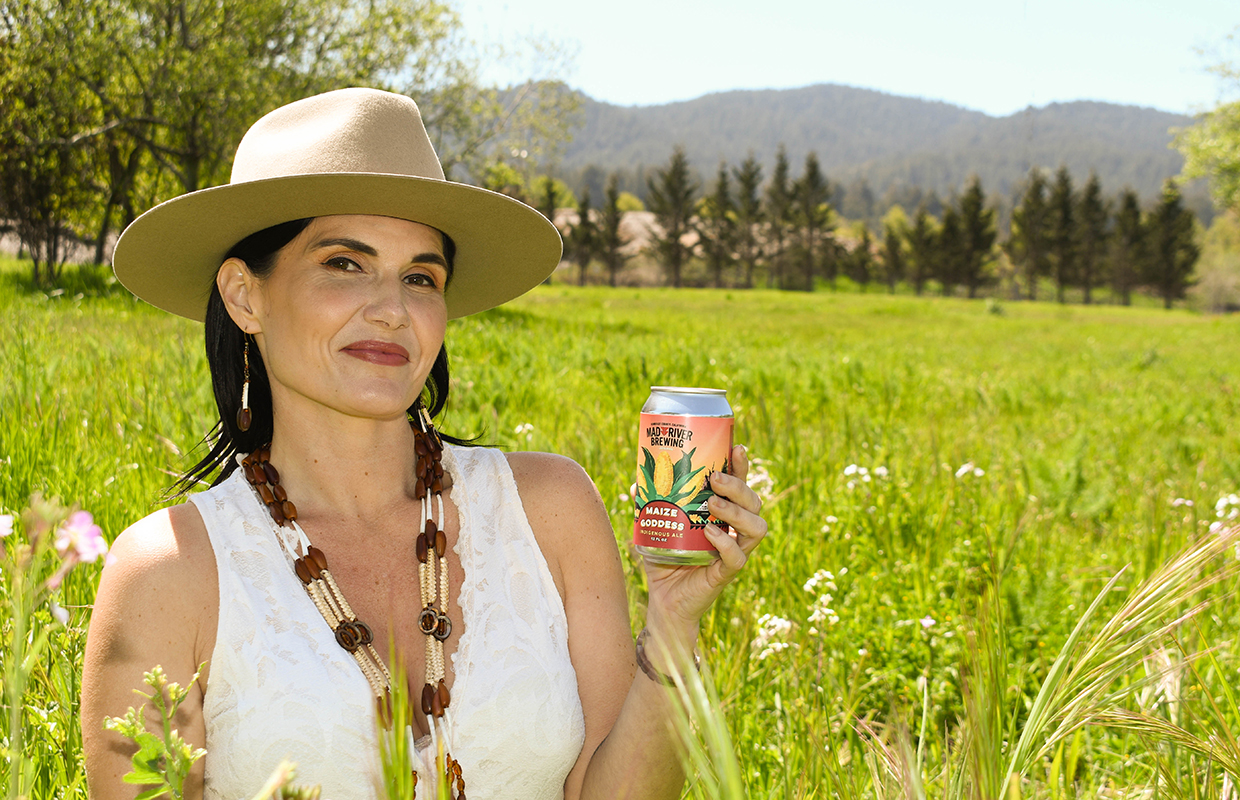
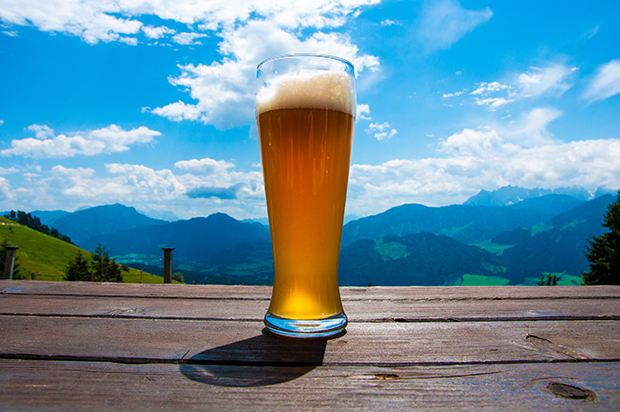
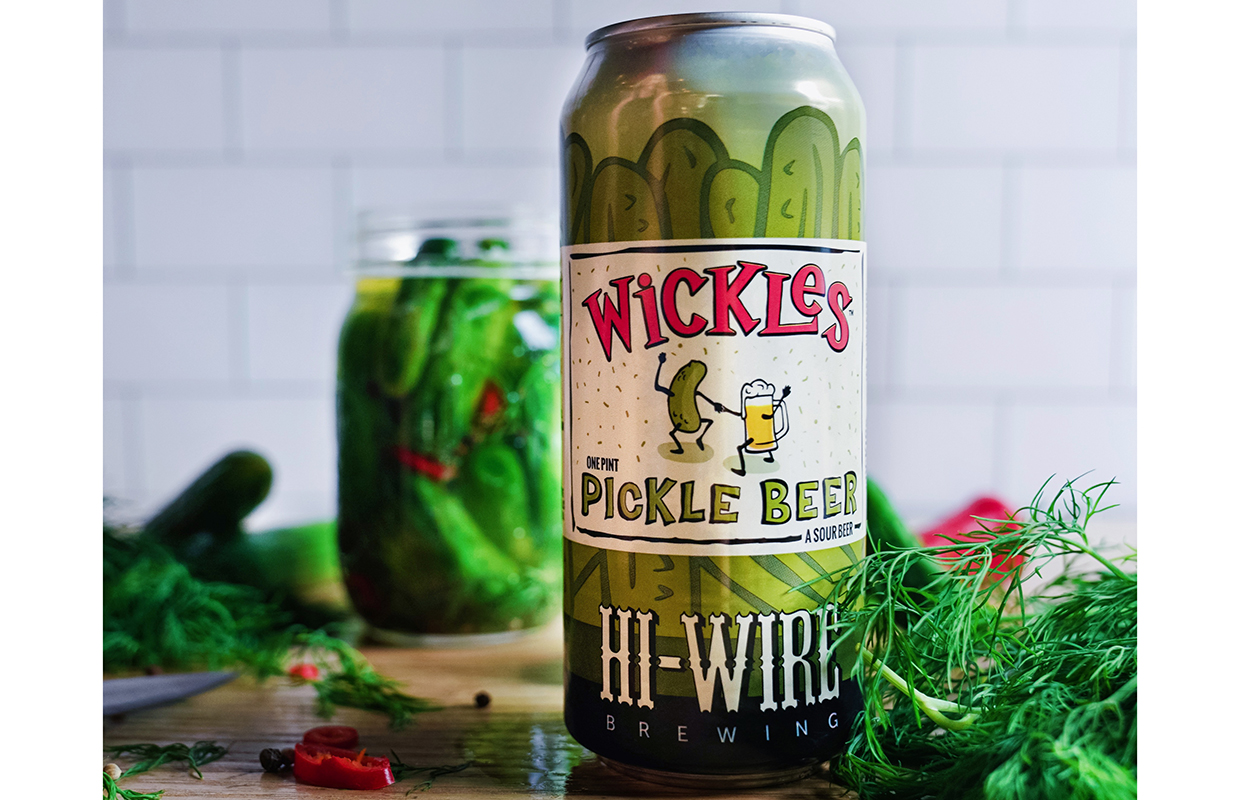
1 Trackback / Pingback